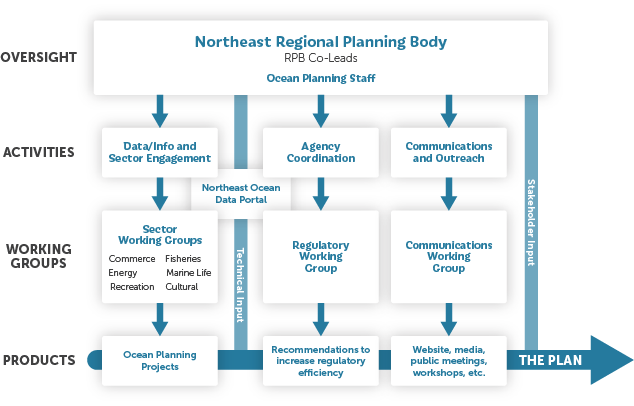Northeast Regional Planning Body
The Northeast Regional Planning Body (RPB) is responsible for developing New England’s ocean plan. The National Ocean Policy, established by Presidential Executive Order in 2010, called for the formation of nine regionally focused RPBs to better manage the nation’s oceans and coasts. New England was the first region in the nation to respond to this call, launching the Northeast RPB in November 2012. More…
The Northeast RPB includes representatives from the six New England states, ten federally recognized tribes, ten federal agencies, and the New England Fishery Management Council. The RPB has no authority to create new regulations. Its mandate is to create a plan and oversee its implementation, with many opportunities for public participation.
- Full roster of members (PDF) (4pp, 173K)
- NE RPB charter (PDF) (11pp, 1.7M) expressing the commitment of NE RPB members to work together.
- Information on past and upcoming RPB meetings.

